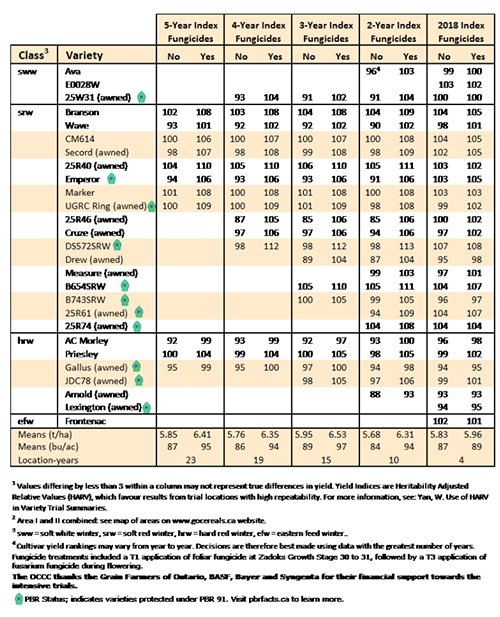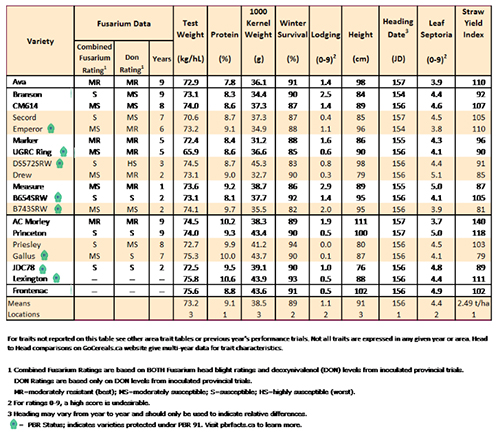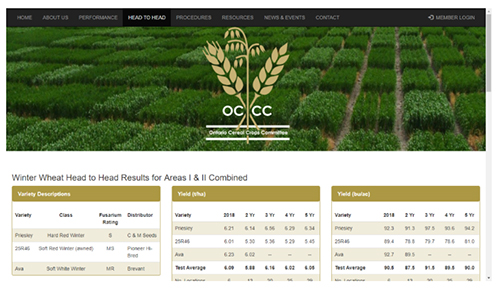
Table 2: Ontario Winter Wheat Performance Trial – Cumulative Yield Indices, Intensive trials Summary for Area I & II Combined, OCCC, August 2018 www.GoCereals.ca.
Winter wheat varietal characteristics are also provided for each variety and include but are not limited to: fusarium and DON, test weight, protein, winter survival, maturity date, etc. (Table 3). This information can be extremely helpful when trying to plan ahead and prepare for the next growing season. For example, if you are in an area where you know you are prone to winter kill you may want to take a closer look at the winter survival data and select a variety that not only yields well but also has a good winter survival rating. Or you may want to know if a variety is susceptible to a disease such as stripe rust so that you can plan ahead and be prepared should the disease show up in your area.

Table 3: Ontario Winter Wheat Performance Trials; Varietal Characteristics Based on Data from Area III OCCC, August 2018 www.GoCereals.ca.
Now, what if you are having a tough time picking between two varieties? The GoCereals.ca website provides a “Head to Head” feature that enables you to dig deeper into the data and compare two to seven varieties against each other based on your growing region and the specific characteristics you are looking for (Figure 1). This tool is a great way to ensure you are picking the right variety suited to your farm and management regime.

Figure 1: Head to Head feature on www.GoCereals.ca.
Once you have made your winter wheat variety selections and it’s time to plant ensure you are using high quality, certified seed with excellent germination as well as a seed treatment to help protect against seedling diseases.
Source : fieldcropnews